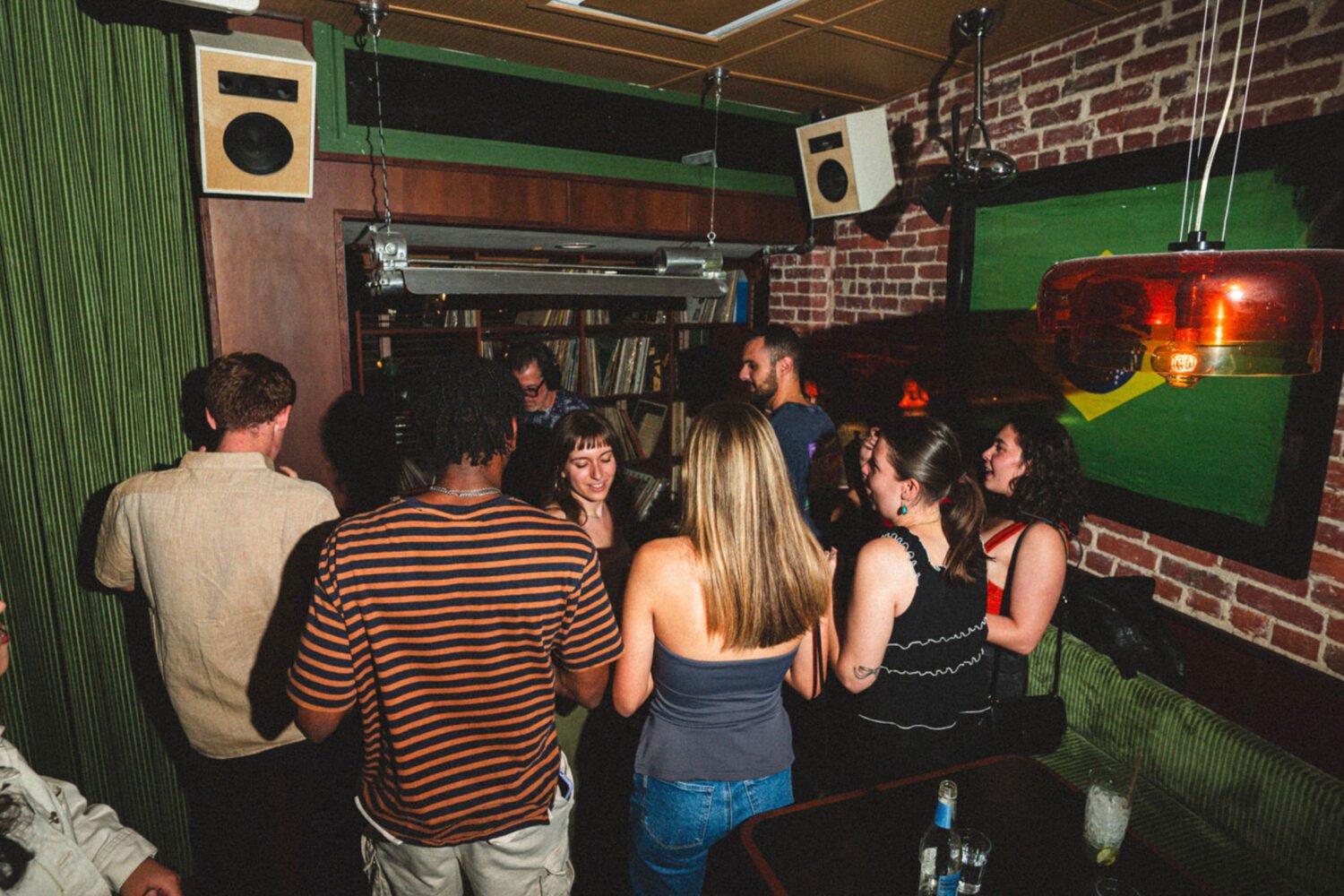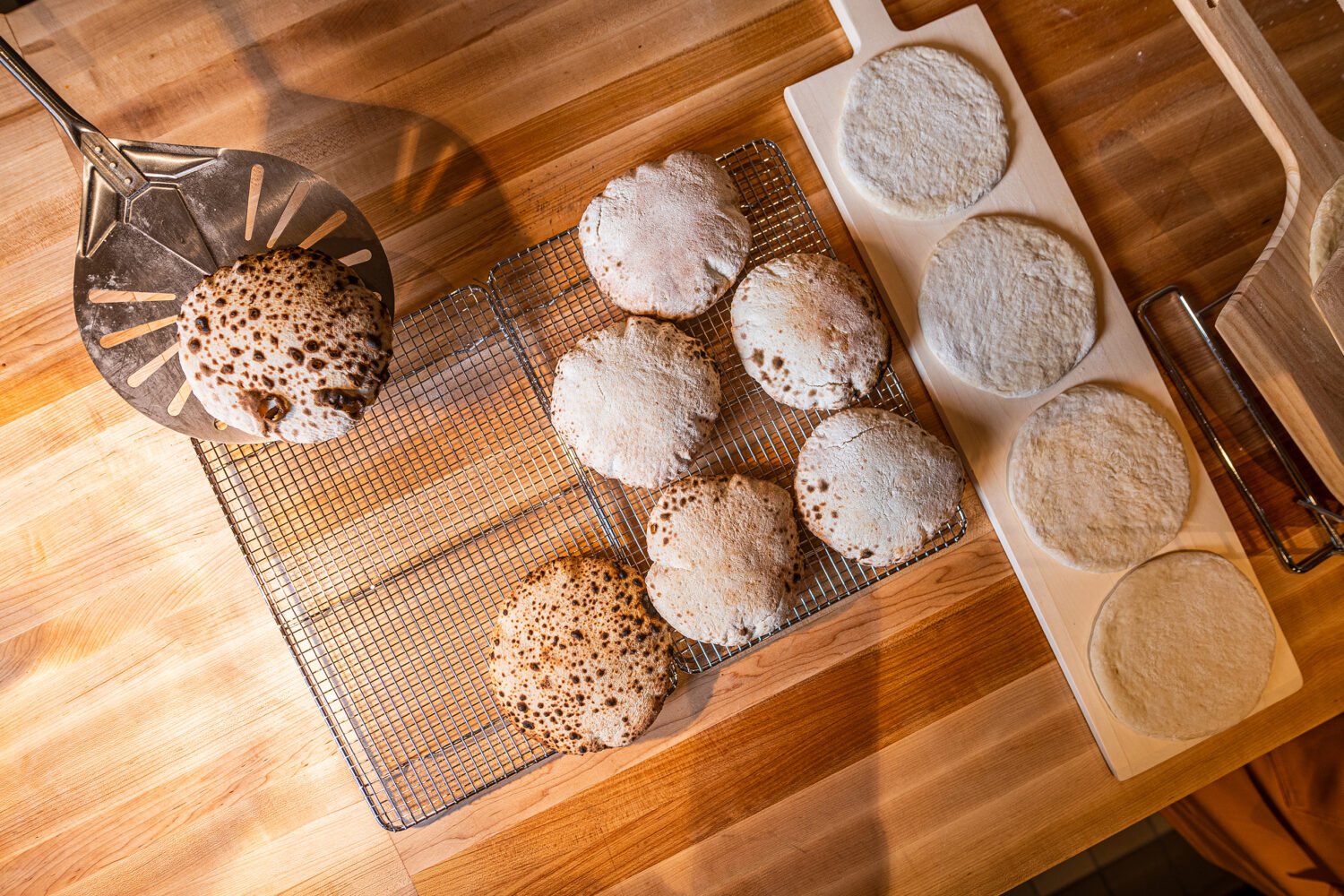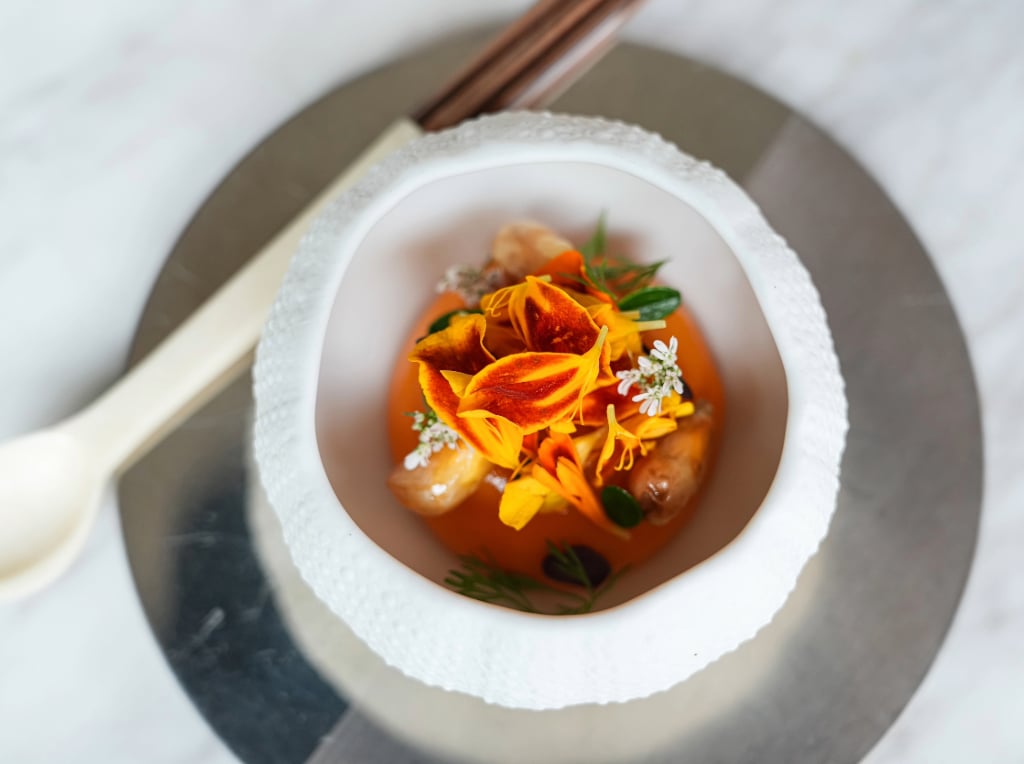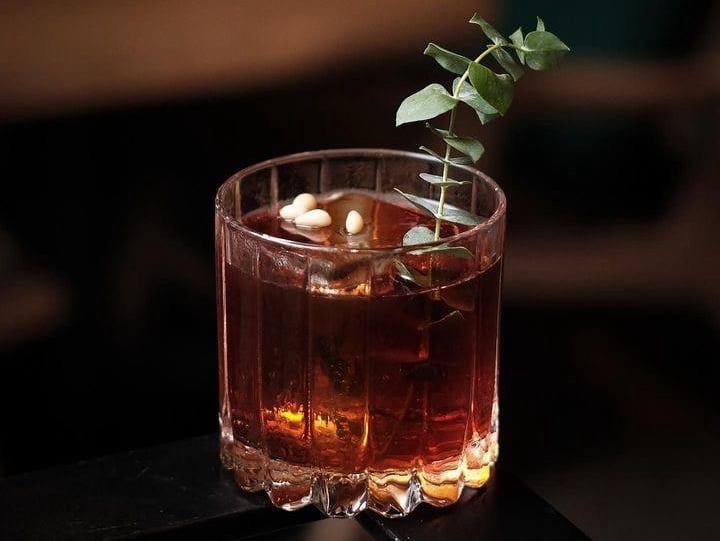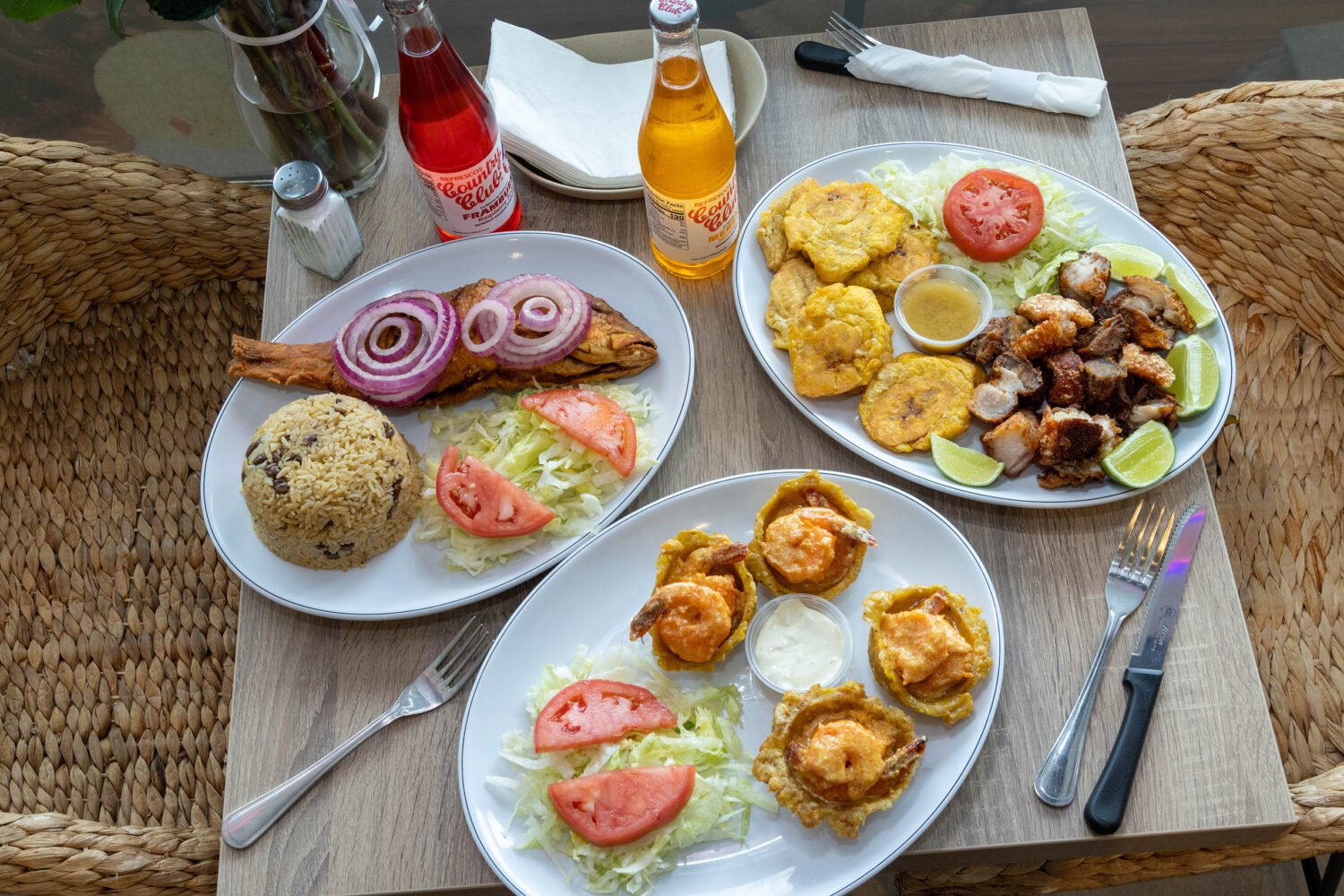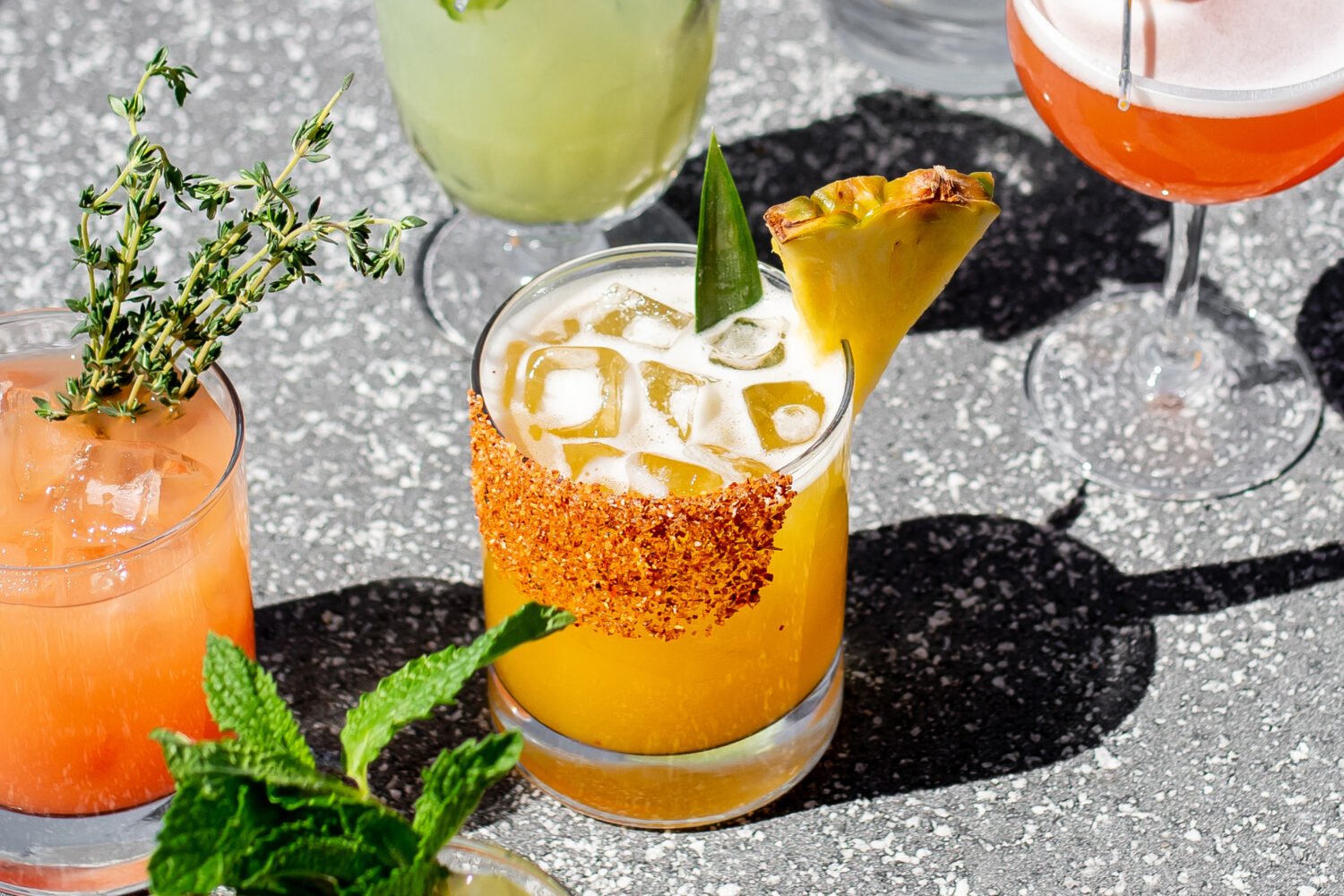
You rarely see either shad or shad roe on restaurant menus, despite a lot of well-meaning talk from chefs about their fondness for market-based cooking. Make the case for shad and shad roe. Why should we care?
Certain things become available at certain times of the year. As a chef, you want to capture the moment, and celebrate the season. I think shad is indicative of Spring. It’s sort of the rite of passage with Springtime – on the West Coast, they have the running of the wild salmon, and here you have the running of the shad. It’s something we should be proud of, and take advantage of when we can. Virginia is the leading shad fishing state in the Mid-Atlantic. Jefferson was a huge fan of shad. He had the largest fleet of shad boats known to man at that time. These things amaze me. I feel a tremendous sense of responsibility. My cooking is the cooking of the mid-Atlantic region, more specifically the Virginia Piedmont. I want my customers to be biting into the region. And there’s no better way to do that than by biting into shad.
There seems to be a big generation gap when it comes to shad. Those raised in the shadow of the Depression know and maybe love it. But very few younger people have any allegiance to it. Many have never heard of it. Who’s still eating shad?
It does tend to be somebody from this region, it does tend to be somebody over 40. Typically, it’s the second generation of families who have been here in Washington. It’s a generation that knew shad in another time.
As big a champion as you are of shad roe, you almost never serve the fish. Why not?
I tend to make secondary preparations of it, making the fish into fritters, that kind of thing. The big thing with the fish, honestly – it’s a bone issue. At this level of dining, you can’t give somebody a piece of shad that’s full of bones, and then tell the customer, ‘Yeah, but that is the nature of shad.’ You can’t do that. It takes diligence, you gotta be careful with the fish, picking all those bones out. It’s not easy to execute. You really can’t make it a center-of-the-plate item. It’s like a lot of these secondary fishes. They’re not the pristine fish you see in the mainstream – grouper, rockfish, striped bass, halibut. Put a piece of shad — or a spot or a croaker — alongside those fish, and see what’s gonna sell. The roe isn’t that much easier of a sell, is it? Your preparations of the roe have all tended to be fairly straightforward.
I saw this recipe the other day for shad roe with caramelized bananas. A Patrick O’Connell recipe. He also does one for shad roe en papillote with truffles. They sound interesting. I’m sure they’re great. But to me, it's just like soft shell crabs: I believe the roe needs to be served as gently as possible. It is what it is. It should be eaten the way it is. I don’t take anything away from anybody’s creativity, but let it be what it is. How are you serving it these days?
Right now we’re serving a shad roe meuniere with pistachio and preserved lemon. Instead of grits, we’re doing a Jerusalem artichoke puree, and bits of crumbled pancetta instead of bacon. Although we’re cooking it in clarified butter and bacon fat. Bacon fat is awesome with the roe. Some cooks recommend making little pinpricks in the roe, so that it doesn’t explode in the pan and spatter the kitchen. What’s your thought on this: Pinpricks or no pinpricks? I don't do pinpricks. My thing is, you want to be very careful on the heat. Very lightly flour the roe. That gives it a little bit of protection, and helps to set it once it hits the heat. When we sautee it, we do it gently over medium low heat. We use a little bacon fat and clarified butter. Three minutes a side. That’s it. Then I take a fresh pan and rub it with butter and finish the roe in the oven at 350 degrees for two minutes. I’m going for a nice pink in the center. How do you know when you’ve achieved it?
Touch the sac. It’s just like testing a steak – it should be like touching the muscle between thumb and wrist. The older the clientele, they like it cooked all the way. But pink is better. What about cooking the fish at home? The fish is turning up now in a number of fish markets and even some grocery stores. Do you have any recommendations for the home cook? It’s gotta be a quick sautee, with a thin fish like that. What I’d recommend is, lightly flour the filet, shake all the excess flour off, then give it a quick sautee in oil. Two minutes, two minutes and a half. You want to cook it flesh side down, get some good caramelization. Then the other side for thirty seconds. I’d finish it with a little knob of butter, and then some herbs – maybe a spring of rosemary — and crushed garlic in oil. It should be medium-rare doneness, it should not be dense. Serve that with an arugula salad with lemon and olive oil, which will pick up the olive oil in the fish, and you’ve got a great little meal right there. Picking a wine to go with shad roe is difficult. Do you treat it like a fish – after all, it’s the roe of a fish – or do you treat it more like a meat, since it’s so rich and earthy? It’s true. If you take a soft, mild, delicate fish like turbot and put that at one end [of the spectrum], and a big aged steak, and put that at the other, I think that shad roe is right in the middle. Although maybe roe falls a little bit further to the right of center than fish. It tends to fall into the flavor profile of a light meat. It’s interesting; you can go a couple of directions. A chablis and any good crisp whites are gonna work with that richness. But so will a good Pinot Noir with good, bright fruit and acidity. A California Pinot works well. A Burgundy would work well, too — one with some good fruit to it. The city’s restaurant scene has undergone a dramatic change over the last five or ten years. We have a whole new spate of New Yorkized restaurants. Fusion restaurants. Sleek restaurants. Not a whole lot of places honoring regional traditions. Is there still a place for shad? Let’s put it this way: It’s not something I think you’re going to find in that infused – I won’t say fusion — type of restaurant that does have global influences, or any of those, as you call them, New Yorkized restaurants. It might not be as sexy, not as in vogue, as doing a sea urchin or a foam. I think Washington no doubt has tradition, and that shad is a part of the tradition in this region. I think it’s a place where you can still put it on the menu and sell it. I’ve gotten a better response from putting it on my menu this year – just these last two weeks — than I ever have. And I gotta think that it’s only going to get better and better.
The thing is, if you don't take time to educate your staff in the back and in the front, its gonna sleep. You can’t just say to yourself, “Well, I love shad roe and I’m gonna put this on the menu and I’m gonna make people love it, too.”
You have to educate your staff and they have to pass that education on to the customers. I can’t say all my kitchen staff has a love for it. Ellen, my wife, used to say: “God, that stuff is nasty!” I’ve got people on my staff who think it’s the ugliest, nastiest thing they’ve ever seen. I’ve got a new sous chef. He came down from Craft, in New York. He’d heard of shad roe, but he’d never seen it. Well, we’d just gotten a delivery. He opened up the bucket, and said, “Look at this!” All the veins are going through it, and all the eggs. He was going crazy. Couldn’t believe that this is what it was. It’s wild to see for the first time. But he's gotten a newfound appreciation for it.







